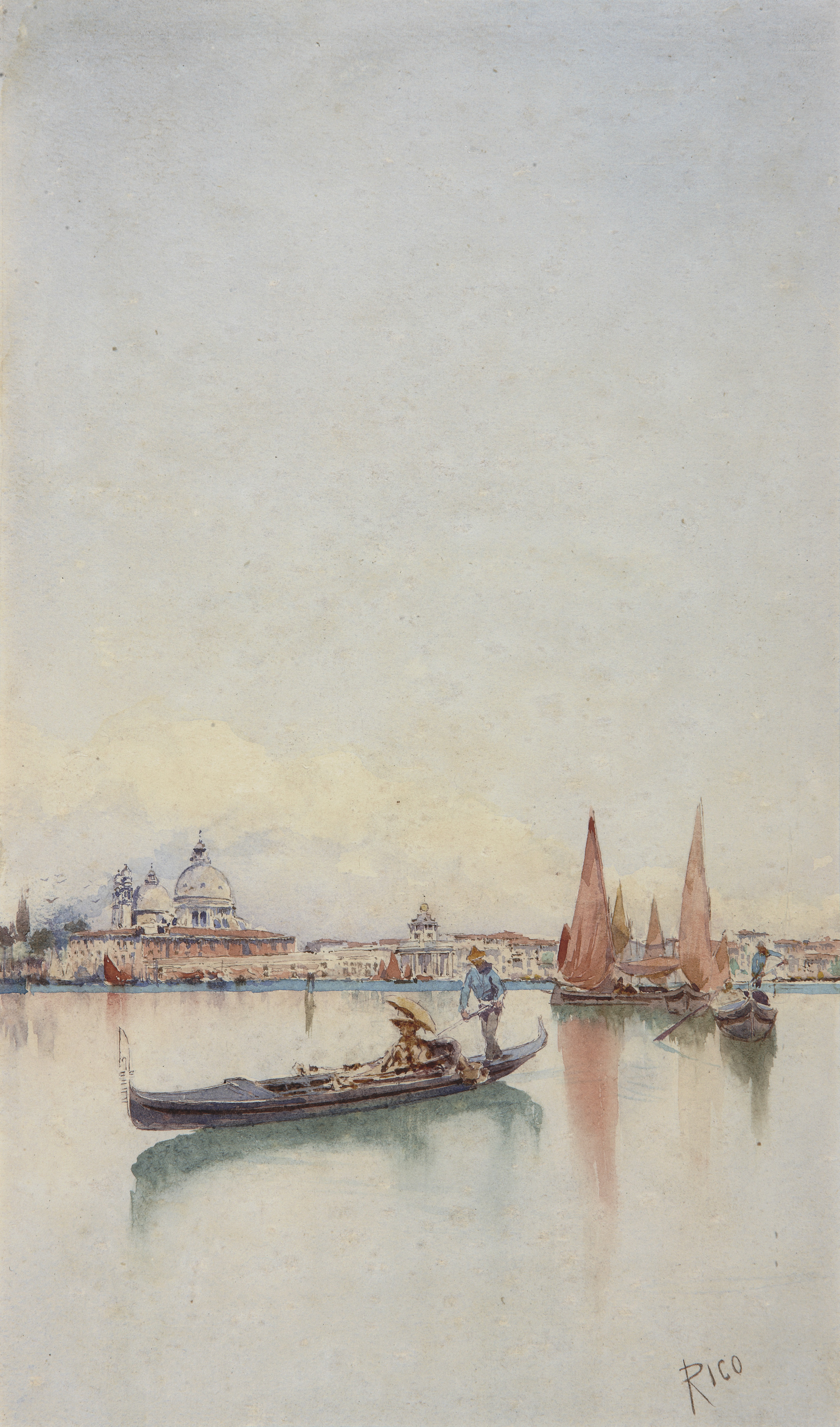
Martín Rico Ortega
Venice
s.f.-
Watercolour on paper
28 x 17 cm
CTB.1995.64
-
© Colección Carmen Thyssen-Bornemisza en préstamo gratuito al Museo Carmen Thyssen Málaga
Of Rico’s well-known and productive dedication to Venetian vedute, particularly with reference to his extensive output of watercolours, perhaps the most striking feature of this one is his framing of the scene. Instead of a horizontal layout compatible with the acutely oblong proportions, he chose a vertical or portrait format, i.e. with the base of the picture on the short side. Here the simplicity of the components made it possible for him to fill three quarters of the painting with sky and reflect it in the water (almost the whole of the remaining space), the result being a uniform pearl-grey colour and a beautiful impression of a damp, leaden atmosphere. The sobriety of the colour – logical with a light like this concealing the vivid tones of bright sunshine – does not preclude the display of a number of bold colour effects in the water, for example the green of the reflection of the boats or the orange of the sails.The charm of the hazy shapes on the strip of land and the blue stripe – which does not prevent identification of the domes of Santa Maria della Salute or the porticoed tower of the Dogana Di Mare customs house – prompt a consideration of the different stages in the execution of this watercolour, its basically fulfilled capacity of expression and the rather nebulous tones used to achieve the atmosphere chosen by the artist to portray a uniform grey that is not enlivened even by the blues of the gondoliers or the sepia of the passenger with an umbrella (inevitable figures which provide the picturesqueness in views like these).
On this occasion the best interpreter of Fortuny-influenced précieux landscape painting was not able to reflect the brilliant radiance of the sun with the plein air technique characteristic of the whole of this painting (a radiance which earned him the nickname Daubigny ensoleillé).This does not look at all like a first version painted in the open air and finished in the studio; indeed it could well be a watercolour with all the freshness of atmospheric immediacy, which thus increases its interest.
As regards the location, it is consonant with Rico’s journey to Italy with Fortuny in 1872 and his fascination with Venice. He painted many views of the city and marketed them successfully, leading, despite accusations of repetitiveness, to the critic Émile Bergerat comparing him to Guardi because of his touch, which, he said, was: “spirited, lively, bold... like the master's. Even after Fortuny’s death Rico continued to go to the city of canals every summer from 1879 (except for 1887 and 1893), renting an old palazzo in order to be close to the Martinengo delle Palle, the residence of Fortuny’s widow Cecilia Madrazo, whose presence there was an added attraction, drawing Spanish followers of Fortuny to the city. Martín Rico also spent the last years of his life in Venice, dying there on 13 April 1908. But in the previous period, that of the Venetian summers, the painter used to go out in a gondola (especially on sunny days) and make sketches for his works, which he usually finished later in Paris. It has recently been said of Rico’s vedute that, although dominated by the inconsequentiality of the decorative, they do, in a way, reflect some of the spiritual magic of the fin-de-siècle landscape.
Esteban Casado